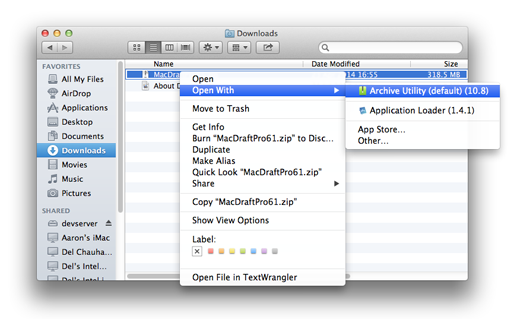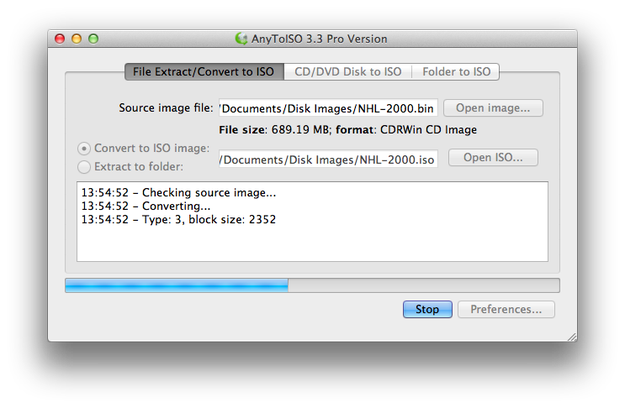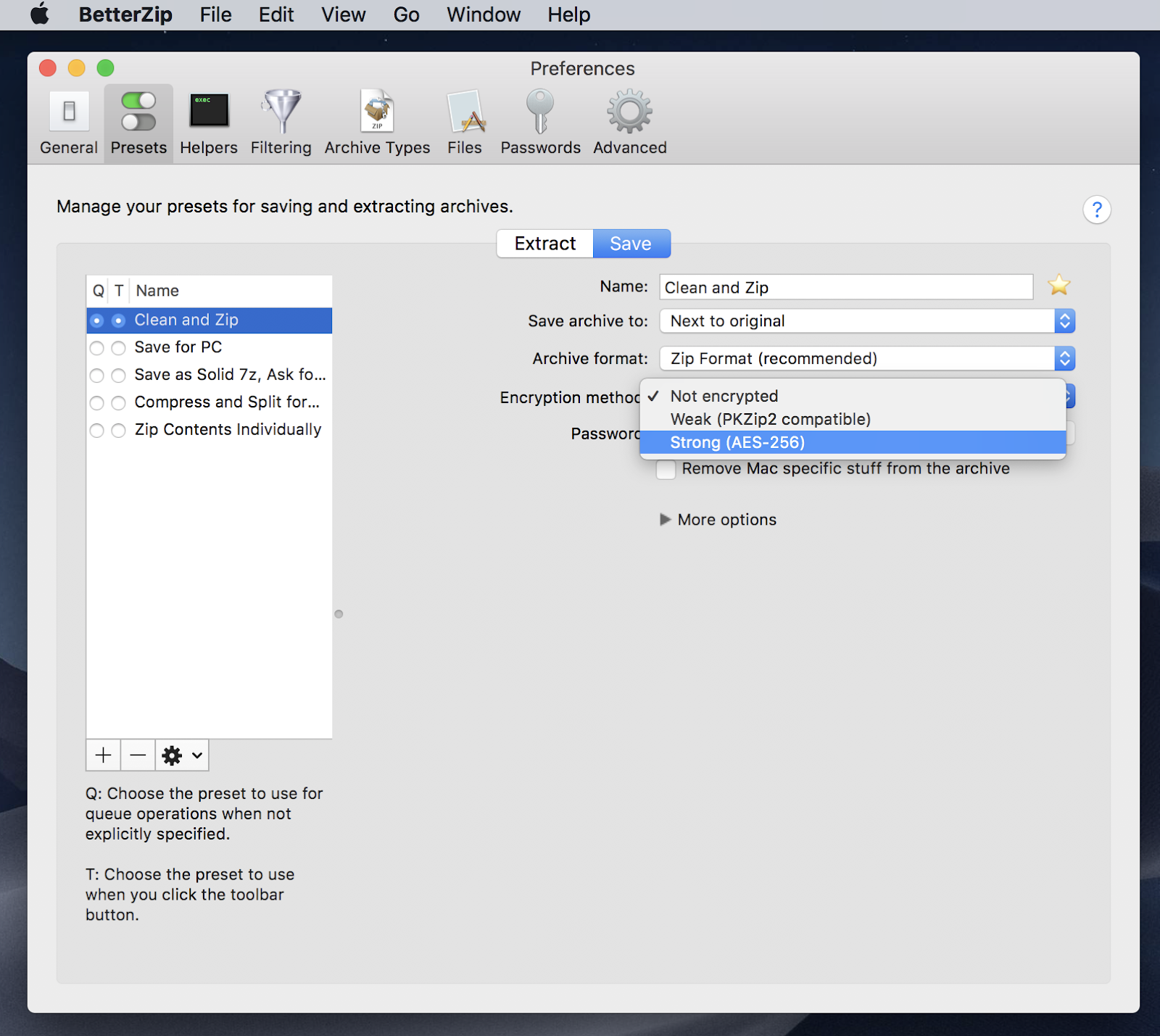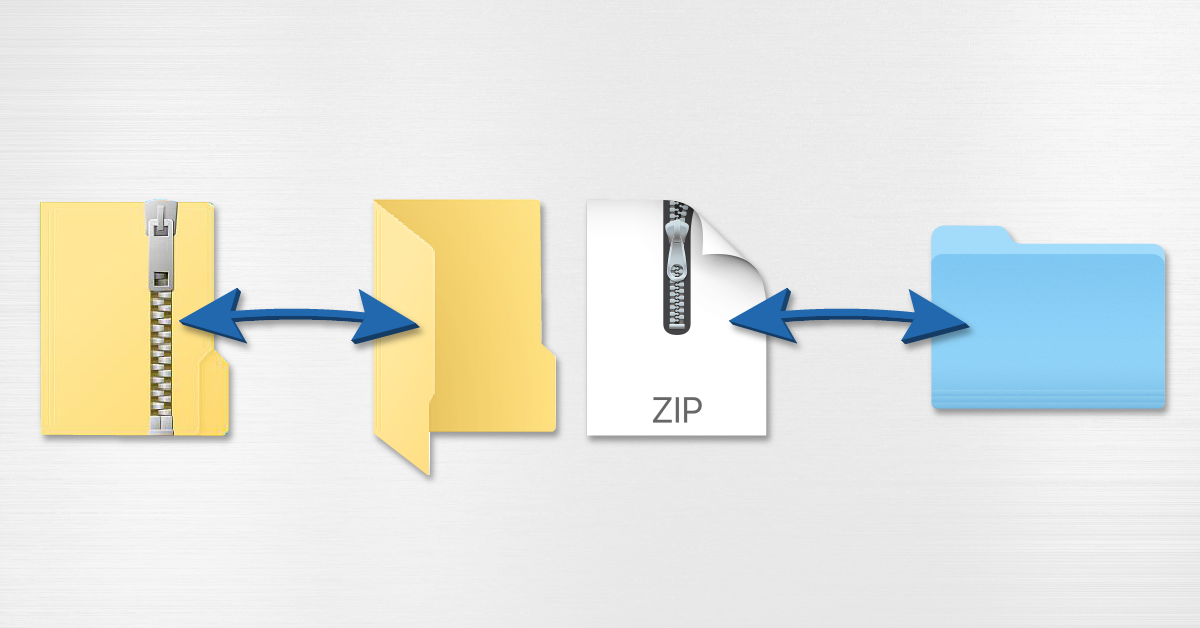- Mac Archive Apps
- Archive Utility App Mac Download Mac
- Mac Software Archive
- Archive Utility App Mac Download Windows 10
Open Password Protected Zip Files on mac: Compressed files is no big deal, Everyone does it and it is needed too if you want to transfer a large file. .ZIP is an archive file format that supports lossless data compression. A .ZIP file may contain one or more files or directories that may have been compressed. Now usually all the Compressed file open on mac the usual way by archive utility which is present as default Unzip functionality in mac, All new Macs running Apple’s OS X operating system come with that utility.
To open/extract ZIP file on Mac, you can use B1 Free Archiver. B1 Free Archiver is a free software for creating archive folder and extracting archive file. B1 Archiver works on all platforms - Windows, Linux, Mac and Android. The freeware supports most popular formats including ZIP. B1 Free Archiver is compatible with: Mac OS X 10.9 Mavericks. Windows/ Mac: Storage and Network Calculator: Caculate storage and bandwidth: CalculatorV1.0.1.2181101: Platinum Series: Windows/ Mac: Codec for Media Player: Codec for Windows Media Player: Platinum Series: Download: Web Component for IP Camera (Mac) Web component for Safari (up to version 11) IPCMacV11: Platinum Series: Download: Web.
When you download a zipped file which may have a password on a Mac, it automatically unzips as you enter the password in the protected Zip Files. But what if you forgot the password or lost it or there is no other way to recover it ? Or be it whatever reason. So I am going to guide you on How to Open Password Protected Zip Files on mac.
There are 2 methods which I will guide you by: Method 1 being using the Mac Terminal which is an application and it lives in the Utilities folder in Applications. You launch it like any other and when you do, you’ll see Apple’s implementation of a Unix command-line environment, known as a shell. The second Method is by a software for unzipping password protector Using Wine which is a compatibility layer capable of running Windows applications on several POSIX-compliant operating systems, such as Linux, Mac OSX, & BSD. Instead of simulating internal Windows logic like a virtual machine or emulator, Wine translates Windows API calls into POSIX calls on-the-fly, eliminating the performance and memory penalties of other methods and allowing you to cleanly integrate Windows applications into your desktop. on Mac.
Contents
- 1 Steps to Open Password Protected Zip Files on Mac :
Steps to Open Password Protected Zip Files on Mac :
Method 1 :
Step 1: Open Terminal Utility App on your Mac
- Find icon on Launchpad
- Open through spotlight search
- Or Under Utilities in Applications folder
Step 2: After Terminal Opened up , Type in : “unzip -P password (Drag zip file) -d (Drag your destination folder)
Step 3: Hit Enter to the command and let it do the magic.
Step 4: The command result will show the password existing in the password protected zip file.
Step 5: Now Open your Zip file and enter the password and there you go ! Bingo!
Method 2 : For Advanced files
Step 1: Download Wine/Wine Bottler on your mac
- Install Wine
Step 2: Download a Zip password cracker or a brute force software like
- or Any other in your knowledge
Step 3: Good Zip Password cracker’s are available for WIN. SO after downloading the software, which will be in .exe which mac can’t run
- Open the .exe via wine to Install the program and run it.
Step 4: Use the Software, (Eg: AAPR)

- Select the type of attack – Zip File special or Brute Force
- Select the character specifications whether Capitals or signs or normal letters
- Select Min & Max letters you may think the password could be
- Or even type prefix or suffix of the letter, if you have any idea
Step 5: The complex the password, the more time it will take to track it. Let the software work and you will find the password.
Goodluck and Hope you did it with ease.
From the Editor’s Desk:
So here it is! the perfect two solutions on How to Open Password Protected Zip Files on mac. Usually the one with dmg files zipped or some packaged content then the second is one better. For locked and protected files the terminal method provides a simple solution. Hope this helps you and let us know in the comments, what you think about this.
Terminal doesn’t work. It says “caution: not extracting; -d ignored”
Sep 28, 2020 • Filed to: Solve Mac Problems • Proven solutions
When Phil Katz invented the Zip file format over 30 years ago, it's highly arguable if he ever imagined his invention would see such profound and widespread use. Zipping files for Mac entails you take several files and compress them into a single file, all the while reducing the overall size of the resultant single file. How convenient is that?
Knowing how to Zip or Unzip files for Mac should thus be a prerequisite for you. If you don't know how to go about doing it, have a look below for an extensive lesson.

Part 1: What Is a Zip File on Mac
Zip is simply a data archive and compression format. Rar is very similar to the Zip but they are quite different too. For one, Zip files were invented long before Rar, meaning there are more software out there capable of opening and decompressing Zip files because it is a standard file format.
Along the same vein, compatibility is also a difference. Because the Zip format is older, both Windows and Mac come pre-installed with software that is capable of opening it. The same can't be said for the Rar format because it often requires third-party software to be opened. The Zip file format is a free and open-source, making it more popular. Thus, the majority of users have software that can open Zip files primarily. And when it comes to the archive creation process, its speed is relatively faster than that of the Rar format.
Zip files are well and truly capable of saving over 80% or more of the space in your Mac's hard drive. Do you now see the marked difference between the two formats?
Part 2: How to Zip a File on Mac for Free
You might ask yourself if knowing how to create and open Zip files are really worth taking the time out to know. Well, ask yourself these questions too: Don't you want to reduce email-transmission time? And wouldn't it be great to save many emails despite your mailbox's space limit? What about the time it takes to upload or download files via the web?
Zipping a file on Mac gives you great solutions to these questions. It uses a native tool called 'Archive Utility' that does the job for you. There are several ways to the Zip file on Mac. Some are free but there are paid options too (third-party software). Only the free solutions will be given out to you today, though. You're welcome.
How to Zip a File on Mac
1. Open a Finder window, then locate the file or folder you want to zip.
2. Right-click on the said file or folder.
3. Select 'Compress' in the drop-down menu you see. The file is then Zipped while the original is left just the way it was.
How to Create Zip Files and Folder on Mac
1. Open a Finder window.
2. Make a folder for the file or files you want to Zip.

3. Highlight the newly-created folder.
4. Click on 'File' in the top menu bar.
5. In the drop-down menu that appears, click on 'Compress.' A zip file will be created in the same directory as the original folder.
How to Zip Files Using Mac Terminal
You can Zip your files in Mac's Terminal in different ways, but the simplest method will be outlined here for you.
1. Open up a Finder window.
2. Open up Terminal by typing in 'Terminal' at the search bar located on the top right part of your screen.
You can also launch Terminal from your Mac's 'Applications/Utilities' folder.
3. Either way, you will see the program. Click on it to launch it.
4. If the Zipped file is not located on your desktop, move it to the desktop (it's more convenient in this way).
5. Type this command in the Terminal and leave a space: zip
6. Drag and drop the file (s) to be Zipped into the Terminal's window.
7. Press 'Enter/Return'. The files will be compressed and Zipped into a single file.
How to Zip Files with Password on Mac
1. Choose the file you want to Zip and right-click on it (to make it easier, make sure the file is on your desktop).
2. Select 'Compress.'
3. Open up a Finder window.
4. Navigate to your Mac's 'Utilities.'
5. Find and click on 'Terminal' to launch it.
6. Type in these commands in the Terminal: zip -er archive_name target_folder
7. A popup window will appear, prompting you to enter a password (you will have to enter the password twice; the second time will be for verification). Type in the secure password and click on 'OK' or press 'Enter/Return.' Your Zipped files are now password-protected.
Part 3: How to Unzip and Open Files on Mac for Free

Knowing how to zip files on Mac is good and fine but sometimes, the files you want are already Zipped. This is especially true if you downloaded the files from the web.
The internet of yesterday is not the same as the internet of today. More and more of the files uploaded to websites come in Zipped formats to make downloads faster and easier. So, what happens when youdownload these files but don't know your way around opening them? Bummer. That is just one reason why knowing how to open zip files on your Mac is now a necessity. But just like Zipping files, Unzipping them is quite easy too. There are, of course, different ways you can do that. Here are a few:
How to Unzip files on Mac
Method 1 (Archive Utility):
1. Navigate to wherever the Zipped file is (your desktop, downloads, etc.)
2. Double-click on the file. Because 'Archive Utility' is integrated into your macOS, the Zipped file will automatically open up and dump the contents into a folder bearing its name; the folder will be in the same directory as the Zipped file too.
Method 2 (Archive Utility):
1. Move your cursor over to the Zipped file or files and select them.
2. Right-click on them.
3. Select 'Open.' The Zipped archive will be extracted into a folder that's in the same directory as the archive.
Mac Archive Apps
Method 3 (Terminal):
1. Open up a Finder window.
2. Launch Terminal by typing in 'Terminal' at the search bar on the top-right section of your Mac's screen. Click on it to launch it.
3. Type this command in the Terminal: unzip {the name of the Zipped file}.zip
4. If the Zipped file is not located on your desktop, move it to the desktop because it makes things easier and faster for you. This is not necessary but it is advised, or else you have to type in the directory of the Zipped file before typing in its name. Like so:
unzip ~/Downloads/example.zip
5. Press on 'Enter/Return'. The contents of the Zipped file or files will be Unzipped to the same directory as the Zipped file.
Method 4 (Terminal)
You can Unzip multiple files all at once into a single directory using Terminal.
Archive Utility App Mac Download Mac
1. Open up 'Spotlight.'
2. Type in 'Terminal' and then launch it.
3. Type the following commands in Terminal:
cd /Users/phil/Downloads/folder_with_zips
(The above command is to navigate to where your multiple Zipped files are. Input the right directory as proper. In the above example, the Zipped files are in 'Downloads').
unzip *.zip
(This is the command that will Unzip the multiple files)
4. Press 'Enter/Return.' All the files will be Unzipped simultaneously.
Part 4: How to Recover Deleted Zip Files on Mac
Try as you may, it's almost impossible for you to use your Mac without Zipping your files for one reason or another. Even if you don't download much from the internet, it can be quite tempting to want to Zip your files simply because you're well aware it will save your hard drive much-needed space.
Likewise, it will be nearly impossible for you to not delete your Zipped files; again, for several reasons. Maybe you didn't do it intentionally, or maybe you did, but then you realize you want the Zipped files back for one or various reasons.
Look no further than Recoverit Mac Data Recovery to be your one and only savior. It comes loaded with features that thoroughly scan your drive for deleted Zipped files and recovers them back to their exact state. And this is all achieved with a few simple steps:
Step 1: Choose a Location
- Open up Recoverit and choose the hard disk to be scanned. The disk should be where the deleted Zipped files had once been in. Click the 'Start' button.
Step 2: Scan the Location
- The scan will begin. After it's done, a window will display a preview of the deleted Zipped files. You can select and deselect filters during the scan to make your search quicker.
For instance, you can use 'File Type' or 'File Path' to alter your search and make judicious use of time. You can pause or stop the scan before it completes too; that's a feature that easily makes the operation even more convenient, wouldn't you agree?
Step 3: Preview & Recover Data
- A window will open up where you will see a preview of the deleted Zipped files to be recovered. Choose the files.
- Click on the 'Recover' button located below and to the right. Your Zipped files will be recovered.
- As a final note, you are advised to save the recovered ZIPPED files in a secondary location and not the one they were initially deleted from.
Isn't Recoverit Mac Data Recovery the most user-friendly software you've seen? The three steps are so simple even a child could do it: Choose a drive, scan it, preview your files, and recover them.
Part 5: How to Fix Zip File on Mac

There are those rare but alarming situations when your Zipped files get corrupted. This is an unavoidable flaw on computers. Fortunately, it's fixable.
As to why the Zipped file got corrupted in the first place, it's possible the files within the Zip were already damaged; or an error occurred while downloading the file from the web. Below are common errors plaquing Zip files.
Unable To Expand Zip File on Mac - This error is mostly caused by an unstable internet connection. If your network keeps going on and off while you're downloading a Zipped file, the end result could be a corrupted archive.
The problem could also stem from you, the user. You might have been too hasty in closing the web browser while the Zipped file was still downloading, consequently corrupting it.
Sometimes, even if you manage to completely download the Zipped file, don't be surprised to learn it's few megabytes short of the size it's supposed to be. Because of those missing megabytes, your entire Zipped file could be corrupted.
The Archive is Corrupted – Believe it or not, even exposing your Mac to magnetic fields or excessive temperatures and mechanical problems could also corrupt a Zipped file. Likewise, unzipping very large files can also corrupt them.
End-of-Central-Directory Signature Not Found – Here's another pervasive error. The probable reason you will see this error is because of the incomplete download of a Zipped file. Another possible reason is the file was one part of a multi-part archive, and the other components are missing.
All the same, the most important thing for you here is to know how to repair corrupted Zipped files, isn't it? These errors can be fixed via Terminal or any decompression utility software, which of course will be a third-party software:
Method 1 (Terminal):
1. Launch Terminal on your Mac.
2. Type this command in the Terminal: unzip ~/Downloads/example.zip
Mac Software Archive
(Replace the 'Downloads' you see in the above example with the directory of your Zipped file. If it's in your Downloads folder too, then leave the command as it is.
Method 2 (Unarchiver):
1. Go to your Mac App Store, download Unarchiver, and install it.
2. Open it.
3. Drag your files into the square, blank space on the left side of the software.
4. Click on 'Decompress.' Your files will be extracted. This software can even succeed where Terminal fails.
Closing Words
By now, you should fully agree with the infinite Mac users out there and on how significant Zip files are. No more are they deemed less important than other software. Indeed, the majority of websites hosting files do so with the files being Zipped.
What's more, you don't have to worry about the state of your Zipped files and the multitude of important files you have within them because of what Recoverit Mac Data Recovery can do for you. This software can be something of an 'insurance' for your Zipped files. If anything befalls them, Recoverit will be there to help recover ZIP and RAR files.
What's Wrong with Mac
Archive Utility App Mac Download Windows 10
- Recover Your Mac
- Fix Your Mac
- Delete Your Mac
- Learn Mac Hacks
